AK4S
Structural
- Jan 2, 2015
- 98
I am working on some rehabs in an existing building and trying to make sense of the Notes provided in the Structural Drawings for Live Load.
See below extracts of the Structural Drawings dated 1960. Educational Building located in Massachusetts.
Design Live Load = 100psf on beams, 150psf on slabs (other floor has 75psf on beams, 150psf on slabs).
What is the design assumption here. Why do we have two different live loads on the slab and the supporting beams.
I can think of two reasons:
(1) This was done to design the slab to make it more stiffer (than what a usual 100psf might require)
or (2) To account for some additional 50psf live load that may be applicable locally anywhere on the floor (so the slab has to be designed for it), but may not be simultaneously applicable throughout the floor(so need not design the beams for it).
But without additional notes I am unable to confirm the reasoning behind using the two different live load values.
Would appreciate if someone can shed light in case this was a common practice in the past and the reasoning behind it.
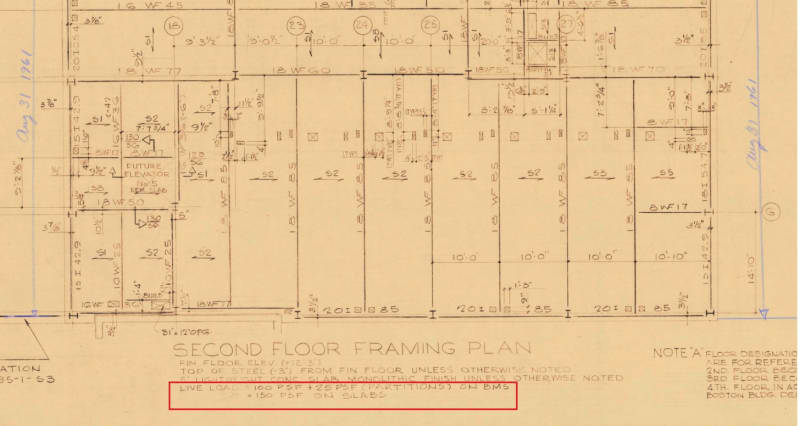
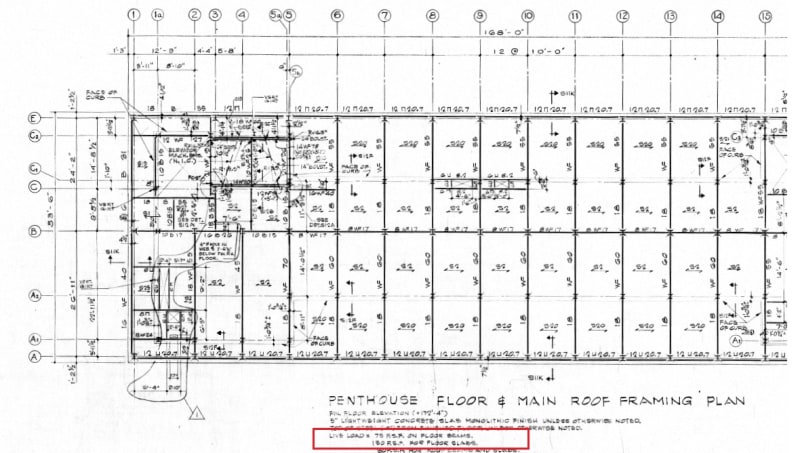
I explored the Live Load Reductions allowed per ASCE 7-10, section 4.7.2 or the Boston Building codes from that time period (relevant Extracts shown below). But the reduction percentages based on tributary area for the beams are much lower than the 30% (150psf to 100psf) or 50% (150psf to 75psf) reductions shown on the existing drawings.
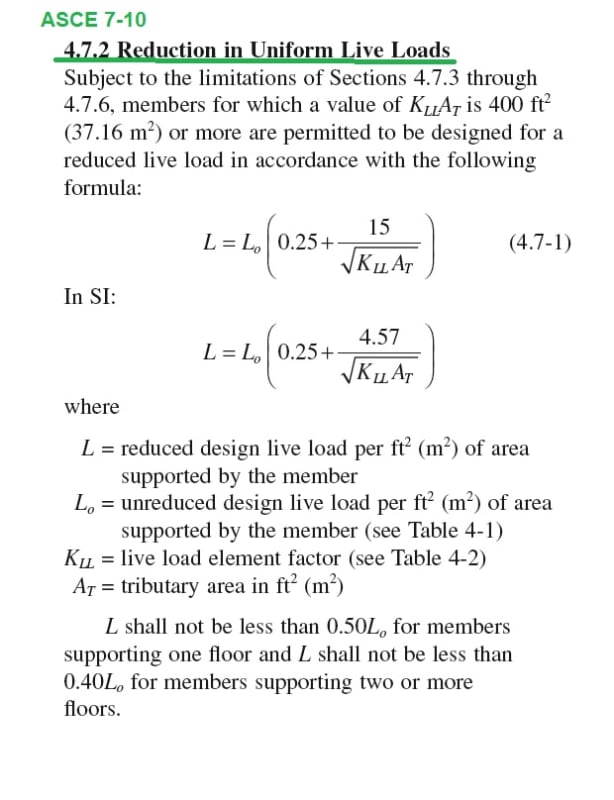
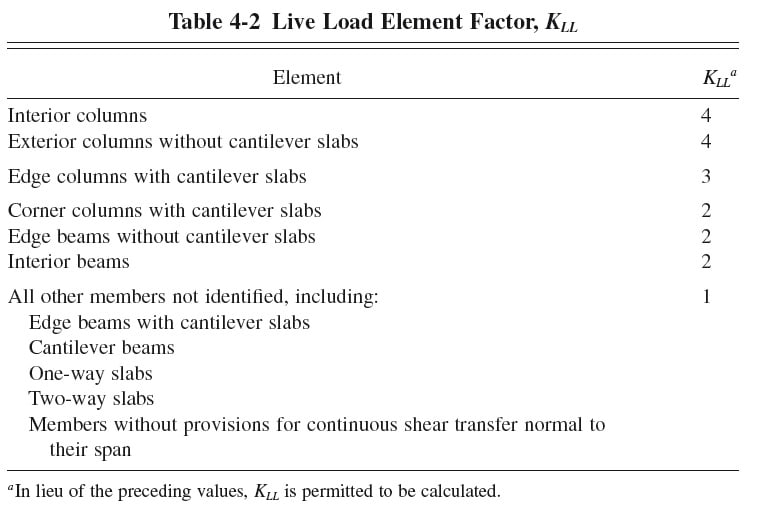
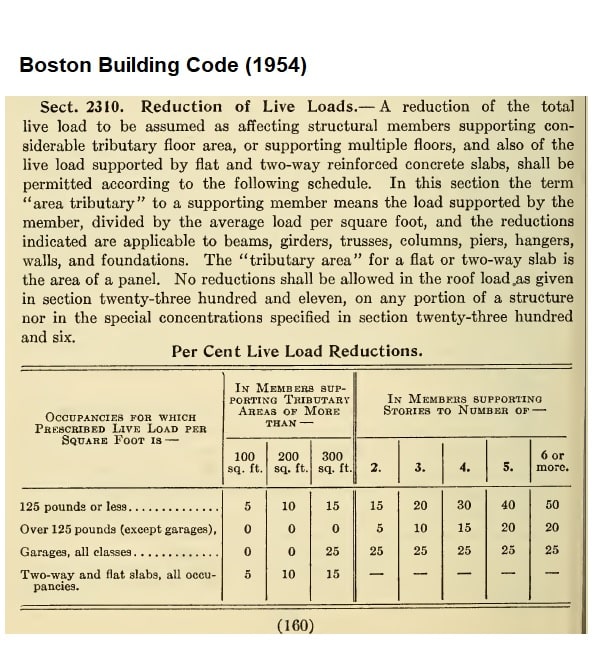
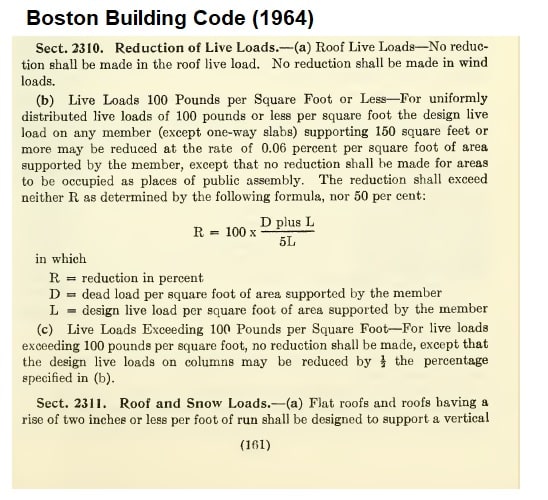
See below extracts of the Structural Drawings dated 1960. Educational Building located in Massachusetts.
Design Live Load = 100psf on beams, 150psf on slabs (other floor has 75psf on beams, 150psf on slabs).
What is the design assumption here. Why do we have two different live loads on the slab and the supporting beams.
I can think of two reasons:
(1) This was done to design the slab to make it more stiffer (than what a usual 100psf might require)
or (2) To account for some additional 50psf live load that may be applicable locally anywhere on the floor (so the slab has to be designed for it), but may not be simultaneously applicable throughout the floor(so need not design the beams for it).
But without additional notes I am unable to confirm the reasoning behind using the two different live load values.
Would appreciate if someone can shed light in case this was a common practice in the past and the reasoning behind it.


I explored the Live Load Reductions allowed per ASCE 7-10, section 4.7.2 or the Boston Building codes from that time period (relevant Extracts shown below). But the reduction percentages based on tributary area for the beams are much lower than the 30% (150psf to 100psf) or 50% (150psf to 75psf) reductions shown on the existing drawings.




